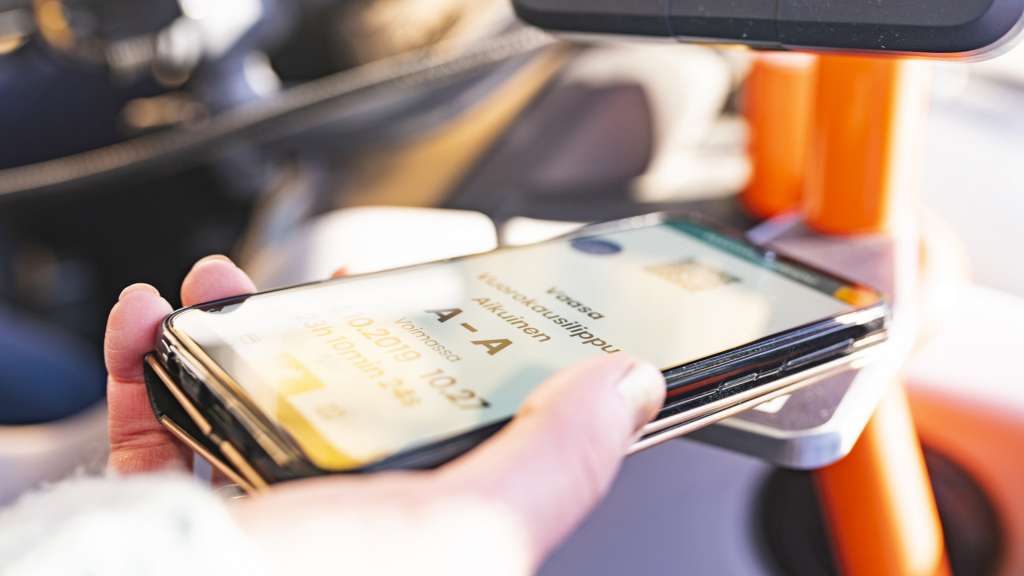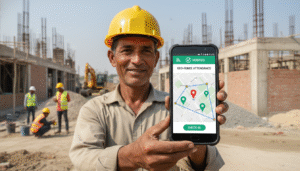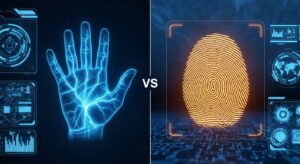Biometric public transport ticketing is transforming the way we pay fares, utilizing unique physical traits like fingerprints or facial recognition for a streamlined experience. This technology offers a secure and efficient alternative to traditional tickets, reducing wait times and simplifying the boarding process.
By replacing cash or cards with a quick biometric scan, passengers can enjoy a more convenient commute, while transit systems benefit from enhanced security and reduced fraud. As cities grow, biometric ticketing provides a scalable and modern solution for public transport.
The Rise Of Biometric Solutions In Daily Life
Biometric solutions are becoming common in our daily lives. From fingerprint scanners to facial recognition, these technologies make tasks easier. Public transport is one area where biometrics are changing how we travel. They offer new ways to pay for tickets and access services. This shift is transforming cities and how we move within them.
From Smartphones To Smart Cities
Smartphones have brought biometric technology to our fingertips. Users unlock their phones with fingerprints or facial scans. This convenience leads to more secure transactions. Public transport systems are adopting similar methods. Passengers can use biometrics to board buses and trains without tickets.
Smart cities rely on these technologies for efficiency. Biometric ticketing reduces wait times. It also decreases the chances of fraud. Cities can manage crowds better. This keeps the flow of people moving smoothly. As cities grow, these solutions help in managing transport needs.
Privacy And Convenience: A Balancing Act
Biometric systems raise concerns about privacy. Many worry about how their data is used. Trust is essential for these systems to succeed. Transport authorities must ensure data security. They need to protect personal information from misuse.
Convenience is a strong selling point. Quick access and seamless travel attract users. Striking a balance between privacy and convenience is crucial. Authorities must be transparent about data handling. This builds trust and encourages more people to adopt biometric ticketing.

Credit: www.biometricupdate.com
Basics Of Biometric Ticketing
Biometric public transport ticketing uses unique human traits. This system identifies passengers through their physical features. Common traits include fingerprints, facial recognition, and iris scans. Such systems offer convenience and security. They reduce the need for physical tickets and streamline the boarding process.
Key Technologies Behind Biometric Systems
Several technologies make biometric ticketing possible. Here are some key ones:
- Fingerprint Scanners: Read unique patterns on fingers.
- Facial Recognition: Analyzes facial features and compares them to stored data.
- Iris Scanners: Captures detailed patterns in the colored part of the eye.
- Voice Recognition: Identifies individuals based on voice patterns.
These technologies work together to ensure accurate identification.
How Biometric Ticketing Works
Biometric ticketing systems follow a simple process:
- Registration: Passengers register their biometric data.
- Verification: At the ticketing point, the system scans the passenger’s biometrics.
- Access: If matched, the system grants access to the transport service.
This process is fast and reliable. It enhances the travel experience.
Here is a basic table showing the steps in biometric ticketing:
| Step | Description |
|---|---|
| 1 | Passenger registers biometric data. |
| 2 | System scans biometrics at entry point. |
| 3 | Access is granted if biometrics match. |
Biometric ticketing simplifies public transport. It eliminates the hassle of lost tickets. Passengers enjoy a smooth travel experience.
Pros Of Biometric Transit Tickets
Biometric public transport ticketing offers many benefits. These tickets use unique traits like fingerprints or facial recognition. This method changes how we travel. It makes the process faster and safer.
Speed And Efficiency In Transit
Biometric transit tickets speed up boarding. No need to search for a physical ticket. Passengers can scan their biometrics quickly. This reduces waiting times at stations.
Less time spent at entry points means more efficiency. Buses and trains run on schedule. Riders enjoy a smoother travel experience.
Reduced Fraud And Enhanced Security
Biometric systems cut down on ticket fraud. Each ticket links to a person’s unique traits. This makes it hard for someone to use another’s ticket.
Enhanced security comes from accurate identification. Public transport becomes safer for everyone. Trust in the system grows. Riders feel secure knowing their tickets are valid.
Cons Of Biometric Transit Systems
Biometric transit systems offer many benefits. They also have drawbacks. These issues can impact users and society. Understanding these cons is essential.
Data Security Concerns
Data security is a major issue with biometric systems. Personal data can be vulnerable to breaches. Hackers may steal sensitive information. This can lead to identity theft and fraud.
Once data is stolen, it is hard to recover. Unlike passwords, biometric data cannot be changed. Users may feel unsafe knowing their data is at risk.
Potential For Systemic Exclusion
Biometric systems can exclude some people. Not everyone has reliable biometric features. For example, some may lack fingerprints or facial recognition traits.
This can create barriers for those with disabilities. It can also affect older adults. They may struggle with technology. As a result, these individuals might be left behind.
Global Case Studies
Biometric public transport ticketing is changing how we travel. Cities worldwide are trying this new method. Each case tells a unique story. Some succeed, while others face challenges. Let’s explore these stories.
Success Stories From Around The World
In Singapore, biometric ticketing is a hit. The system uses facial recognition at entry points. Passengers enjoy quick access. This speeds up the boarding process. It reduces long lines during peak hours.
In London, the Oyster card system evolved. Now, passengers can use their fingerprints. This method makes it easier to pay. No need for cards or cash. The city reports higher customer satisfaction.
In Stockholm, a pilot program showed promise. Travelers used iris scans to board buses. The results were positive. The city plans to expand the program in the coming years.
Lessons From Failed Implementations
Not all attempts at biometric ticketing have worked. In New York, a project faced major issues. Privacy concerns made many people uneasy. The program was put on hold after low adoption rates.
In Australia, a trial with facial recognition failed. Many users reported technical glitches. People found the system unreliable. This led to a loss of trust among passengers.
These examples remind us that not all innovations succeed. Understanding local needs is crucial. Each city must consider its unique challenges.
User Experience And Accessibility
Biometric public transport ticketing is changing how we travel. It focuses on making the journey easy for everyone. User experience and accessibility are key points. They ensure everyone can use this system without barriers.
Designing For Diverse Populations
Designing for diverse populations means considering different needs. People have different abilities and backgrounds. Some may have disabilities. Others may be elderly or from different cultures.
Biometric systems must be user-friendly. Simple interfaces help all users. Clear instructions and visuals aid understanding. Multilingual support is also vital. This helps non-native speakers feel comfortable.
Accessibility features should be standard. Voice commands can assist those with visual impairments. Touchless options are great for those with mobility issues. These elements make travel easier for everyone.
Overcoming Accessibility Hurdles
Accessibility hurdles can limit use. Not all locations are ready for biometric systems. Some places need upgrades to support new technology. Efforts must focus on improving these areas.
Training for staff is essential. They should understand how to help users with different needs. A welcoming attitude makes a big difference. It encourages everyone to use the system.
Regular feedback from users is crucial. Gathering input helps identify areas for improvement. Listening to users leads to better solutions.
Legal And Ethical Considerations
Biometric public transport ticketing raises important legal and ethical questions. These issues affect how we use technology in our daily lives. Understanding these factors is crucial for both users and providers.
Navigating Privacy Laws
Privacy laws vary by country and region. Many laws protect personal information. Biometric data is sensitive and must be handled with care.
Key privacy laws include:
- GDPR (General Data Protection Regulation): This EU law protects personal data.
- CCPA (California Consumer Privacy Act): This law grants rights to California residents.
- PDPA (Personal Data Protection Act): This law governs data in several countries.
These laws require transparency. Organizations must inform users about data collection and use. Users should know how their data is stored and processed.
Ethical Implications Of Biometric Data Collection
Collecting biometric data raises ethical concerns. Key issues include:
- Informed Consent: Users should agree to data collection willingly.
- Data Security: Safeguarding biometric data is essential.
- Potential for Misuse: There is a risk of data being used improperly.
Organizations must prioritize ethical practices. They should establish strong data protection measures. This ensures user trust and confidence.
Public awareness is vital. Users need to understand how their data is used. Educating the public can lead to informed choices.

Credit: metrorailnews.in
Looking To The Future
Biometric public transport ticketing is changing how we travel. It offers a glimpse into a smoother and safer travel experience. As technology grows, so do the possibilities. Let’s explore what lies ahead.
Innovations On The Horizon
New technologies are coming to public transport. Facial recognition and fingerprint scanning will become common. These tools make boarding faster and easier. They can also reduce ticket fraud.
Smart cards may link to biometric data. This ensures that only the right person uses the card. Mobile apps could allow ticket purchases through biometrics. A simple scan could confirm your identity and payment.
Predicting The Adoption Curve
How fast will people accept these new systems? Early adopters will likely embrace the change first. They will enjoy the convenience and speed. As awareness grows, more people will follow.
Education is key. Public campaigns can help people understand the benefits. Trust in the technology will build over time. Resistance may fade as success stories emerge.
Governments and transport agencies will play a role. They need to ensure safety and privacy. A careful approach will encourage acceptance among users.

Credit: www.americanbanker.com
Frequently Asked Questions
What Is Biometric Public Transport Ticketing?
Biometric public transport ticketing uses unique physical traits, like fingerprints or facial recognition, for fare payment. This technology enhances security and convenience. Passengers can board quickly without traditional tickets. It reduces fraud and streamlines the boarding process, making travel more efficient and user-friendly.
How Does Biometric Ticketing Improve Convenience?
Biometric ticketing eliminates the need for physical tickets or cards. Passengers can simply use their biometric data to access services. This speeds up the boarding process and reduces queues at ticket counters. Overall, it offers a seamless travel experience, making public transport more appealing to users.
Is Biometric Ticketing Secure?
Yes, biometric ticketing is highly secure. It relies on unique biological traits that are difficult to replicate. Advanced encryption protects users’ data, preventing unauthorized access. This system also reduces the risk of ticket fraud, ensuring that only authorized passengers can board.
Enhanced security features build trust among users.
What Are The Challenges Of Biometric Ticketing?
Challenges include privacy concerns, technological limitations, and initial implementation costs. Users may worry about data security and how their biometric information is stored. Additionally, not all transport systems have the infrastructure to support biometric solutions. Addressing these issues is crucial for widespread adoption and user acceptance.
Conclusion
Biometric public transport ticketing offers clear benefits. It simplifies the payment process and enhances security. Passengers enjoy faster boarding and reduced wait times. Cities can manage transit systems more efficiently. This technology can also reduce fraud in ticketing. As more people embrace these systems, public transport becomes easier for everyone.
Biometric ticketing is a step forward in modern travel. Embracing this change can lead to a better commuting experience for all. The future of public transport looks promising with these advancements.








